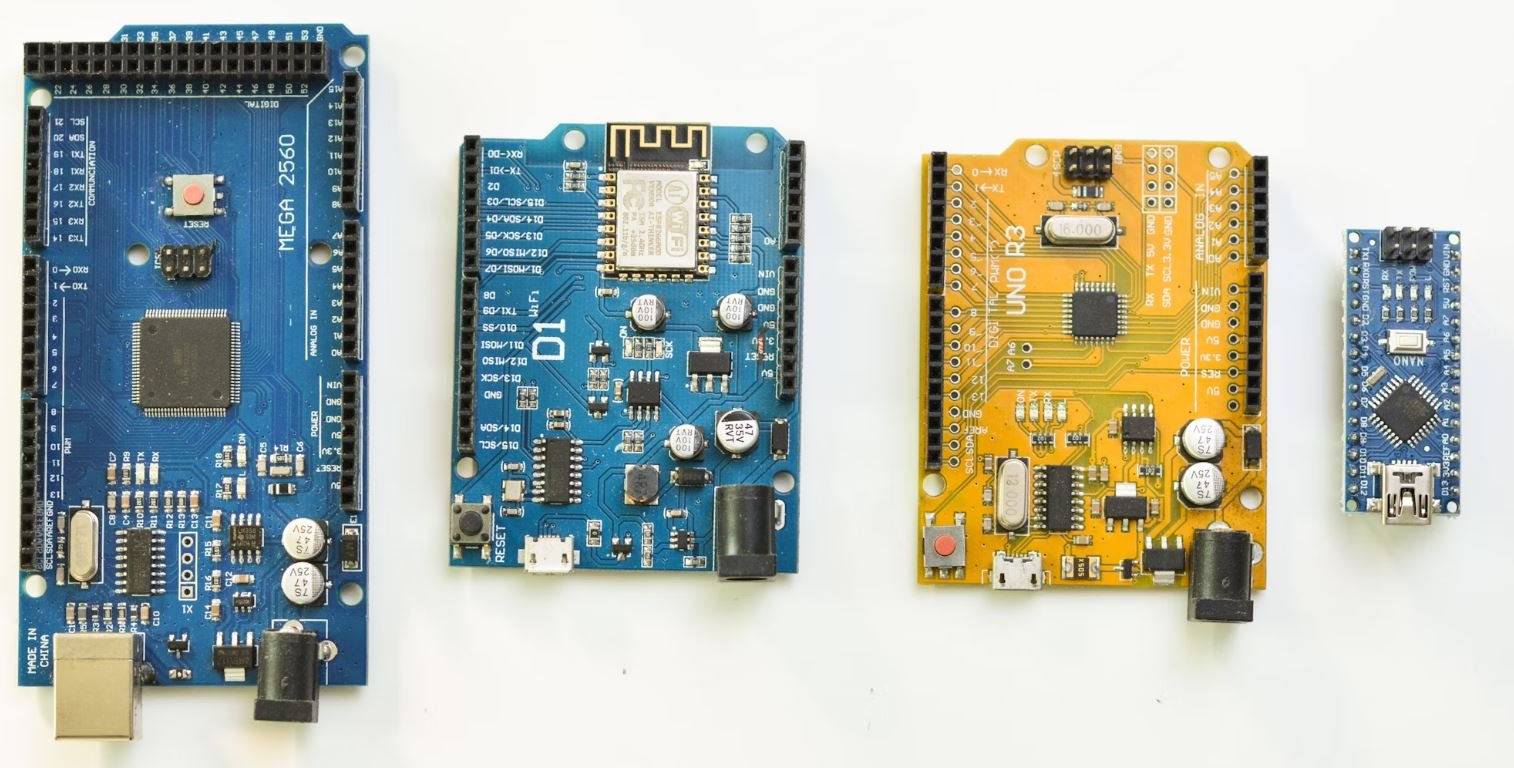What Type of Motor Does Tesla Use?
Tesla, the renowned electric vehicle (EV) manufacturer, has gained global recognition for its cutting-edge technology and innovative approach towards sustainable transportation. As an integral part of Tesla’s groundbreaking vehicles, the motor system plays a vital role in powering these electric cars. In this article, we dive into the details of the type of motor used by Tesla and explore its unique features and advantages.
Key Takeaways:
- Tesla utilizes a three-phase AC induction motor for its electric vehicles.
- The AC induction motor is based on the designs of inventor Nikola Tesla.
- These motors eliminate the need for brushes, resulting in reduced maintenance and longer lifespan.
- Tesla’s motor design allows for regenerative braking, which helps maximize energy efficiency.
Tesla vehicles are powered by a three-phase AC (alternating current) induction motor, a technology the company relies on to deliver exceptional performance, efficiency, and sustainability. Developed based on the original designs of renowned inventor Nikola Tesla, this motor type has revolutionized the electric vehicle industry. Unlike traditional internal combustion engines, **Tesla’s motors do not require any spark plugs or cylinders**. Instead, they employ a system of electrical coils and magnets to generate rotational energy through the principles of electromagnetic induction.
*The AC induction motor is characterized by its superior efficiency and simplicity of construction.* This type of motor is known for its robustness, high reliability, and low maintenance requirements. It does not rely on brushes as in brushless DC motors, eliminating the wear and tear associated with brushes and allowing Tesla vehicles to have an extended lifespan with minimal mechanical maintenance.
How the Tesla Motor Works
In the AC induction motor used by Tesla, three separate windings create a rotating magnetic field, producing a torque force to propel the vehicle forward. *This rotating magnetic field interacts with the stationary magnets within the rotor, inducing an electric current, which in turn creates another magnetic field that opposes the original field.* The repulsive interaction between the two fields causes the rotor to spin, resulting in the rotation of the wheels.
To generate the rotating magnetic field, Tesla’s motor relies on three-phase power, which provides a consistent flow of electricity. This delivery of power ensures the motor operates efficiently and maintains consistent performance over a wide range of speeds. Additionally, the use of an AC motor enables Tesla to incorporate regenerative braking technology, where the motor converts the kinetic energy of the moving vehicle back into electrical energy and stores it in the battery for later use. This regenerative braking feature contributes to the overall energy efficiency of Tesla vehicles.
Comparison of Tesla’s Motors
A comparison of various Tesla model motors reveals some interesting differences:
| Tesla Model | Motor Type | Power Output (hp) |
|---|---|---|
| Tesla Model S | Three-Phase AC Induction | 670 |
| Tesla Model 3 | Permanent Magnet Synchronous | 271 |
| Tesla Model X | Three-Phase AC Induction | 670 |
Table 1: Comparison of Tesla Model Motors and Power Output.
As seen in Table 1, the Tesla Model S and Model X adopt the three-phase AC induction motor, offering an impressive power output of 670 horsepower. On the other hand, the Tesla Model 3 utilizes a permanent magnet synchronous motor, which still delivers a formidable 271 horsepower. Each motor type is optimized for the respective vehicle model to offer exceptional performance and driving experience.
The Future of Tesla Motors
Tesla continues to advance its motor technology and improve its performance in each new vehicle release. The company’s ongoing commitment to research and development has enabled significant strides in extending range, enhancing efficiency, and boosting acceleration capabilities. With the electrification of the automotive industry gaining momentum, Tesla’s motor technology serves as a benchmark for other automakers, inspiring competition and further innovation.
In conclusion, Tesla utilizes a three-phase AC induction motor for its electric vehicles. This motor type, based on the designs of Nikola Tesla, offers numerous advantages, including high efficiency, reduced maintenance, and regenerative braking. As Tesla continues to refine its motor technology, the future looks promising for the electric vehicle industry.

Common Misconceptions
Misconception 1: Tesla uses a traditional internal combustion engine
One common misconception about Tesla is that they use a traditional internal combustion engine, similar to gasoline-powered cars. This is not true as Tesla vehicles are fully electric and do not have any traditional engine components.
- Tesla cars do not require gasoline as they are powered by a high-capacity battery.
- Tesla vehicles do not emit any tailpipe emissions, resulting in zero pollution.
- The absence of an internal combustion engine allows for a quieter and smoother driving experience.
Misconception 2: Tesla uses a hybrid engine
Another common misconception is that Tesla vehicles use a hybrid engine, which combines both electric and gasoline power sources. However, it is important to note that Tesla cars are solely powered by electricity and do not have any gasoline components in their drivetrain.
- Tesla vehicles are designed to be fully electric, providing a cleaner and greener alternative for transportation.
- There is no need for refueling at gas stations since Tesla cars can be charged at home or using Tesla’s extensive Supercharger network.
- The absence of a hybrid engine allows for greater energy efficiency and improved performance.
Misconception 3: Tesla uses an AC induction motor
Some people mistakenly assume that Tesla vehicles use an AC induction motor, which was one of the earlier motor technologies utilized by the company. While Tesla initially used AC induction motors in its Roadster model, all current Tesla vehicles, including the Model S, Model 3, Model X, and Model Y, actually use a permanent magnet synchronous motor.
- The permanent magnet synchronous motor utilized by Tesla vehicles offers improved efficiency and power.
- This motor type provides a higher torque density, resulting in quick acceleration and responsive performance.
- Tesla’s permanent magnet synchronous motor design allows for better regenerative braking, maximizing energy recapture during deceleration.
Misconception 4: Tesla uses a single motor in all their vehicles
Many people assume that Tesla vehicles utilize a single motor configuration across all models. However, Tesla offers both single motor and dual motor options in their lineup, providing customers with a choice between rear-wheel drive and all-wheel drive.
- Tesla’s single motor configuration offers a more affordable option while still delivering impressive performance and range.
- The dual motor configuration provides enhanced traction, stability, and acceleration for improved overall driving experience.
- Both motor configurations contribute to the overall efficiency and versatility of Tesla vehicles.
Misconception 5: Tesla uses off-the-shelf motors
Some individuals mistakenly believe that Tesla uses off-the-shelf motors sourced from other manufacturers in their vehicles. However, one of Tesla’s key differentiators is their in-house motor production. Tesla designs and manufactures their own custom motors, allowing them to optimize performance and efficiency for their specific vehicle models.
- Tesla’s in-house motor production enables greater control over motor specifications and quality, resulting in superior performance and reliability.
- Having their own motor production also allows Tesla to continuously innovate and improve their motor technology, staying at the forefront of electric vehicle development.
- By producing their own motors, Tesla can ensure compatibility with their overall vehicle design and optimization, maximizing the benefits of the electric drivetrain.

Tesla’s Electric Motors
Tesla, an innovative electric vehicle company founded by Elon Musk, has revolutionized the automotive industry with its cutting-edge technology. One of the key components that powers Tesla vehicles is their remarkable electric motors. Let’s explore ten fascinating aspects of Tesla’s electric motors.
Table: Motor Types and Application
Understanding the different motor types used by Tesla and their applications helps shed light on the versatility of their vehicles. Here are the various motor types:
| Motor Type | Application |
|————|————-|
| Induction | Tesla Model S, Model X |
| Permanent Magnet | Tesla Model 3, Model Y, Cybertruck |
| Interior Permanent Magnet | Tesla Roadster 2.0 |
| Switched Reluctance | N/A |
| Hybrid (AC Induction with Permanent Magnet) | Tesla Semi Truck |
| Magnetic Motor | Tesla Powerwall |
| Axial Flux | N/A |
| Hybrid Stepper | N/A |
| Brushed DC | N/A |
| Brushless DC (BLDC) | N/A |
Table: Motor Power Comparison
Tesla’s electric motors deliver impressive power, contributing to the remarkable performance of their vehicles. Here’s a comparison of motor power in various Tesla models:
| Model | Motor Power (kW) |
|——-|—————–|
| Model S | 335 – 670 |
| Model X | 335 – 670 |
| Model 3 (Standard Range Plus) | 238 |
| Model 3 (Long Range) | 283 |
| Model 3 (Performance) | 335 |
| Model Y (Dual Motor) | 244 |
| Model Y (Performance) | 335 |
| Cybertruck (Dual Motor) | 477 |
| Cybertruck (Tri Motor) | 670 |
Table: Torque Comparison
Tesla’s electric motors are known for their exceptional torque, enabling rapid acceleration. Here’s a comparison of torque in various Tesla models:
| Model | Torque (Nm) |
|——-|————-|
| Model S (Long Range) | 931 |
| Model S (Performance) | 967 |
| Model X (Long Range) | 931 |
| Model X (Performance) | 967 |
| Model 3 (Standard Range Plus) | 416 |
| Model 3 (Long Range) | 493 |
| Model 3 (Performance) | 640 |
| Model Y (Dual Motor) | 510 |
| Model Y (Performance) | 640 |
Table: Efficiency Comparison
Efficiency is a crucial aspect of electric motors, as it determines the energy consumption and range of Tesla vehicles. Here’s a comparison of motor efficiency in different Tesla models:
| Model | Efficiency (%) |
|——-|—————-|
| Model S (Long Range) | 75 – 83 |
| Model S (Performance) | 75 – 83 |
| Model X (Long Range) | 75 – 83 |
| Model X (Performance) | 75 – 83 |
| Model 3 (Standard Range Plus) | 80 – 86 |
| Model 3 (Long Range) | 80 – 86 |
| Model 3 (Performance) | 80 – 86 |
| Model Y (Dual Motor) | 80 – 86 |
| Model Y (Performance) | 80 – 86 |
Table: Cooling System
Tesla incorporates advanced cooling systems into their electric motors to ensure they operate optimally under demanding conditions. Here are the cooling methods used:
| Motor Type | Cooling System |
|————|—————-|
| Induction | Water-cooled |
| Permanent Magnet | Liquid-cooled |
| Interior Permanent Magnet | Liquid-cooled |
| Hybrid (AC Induction with Permanent Magnet) | Liquid-cooled |
| Magnetic Motor | Liquid-cooled |
Table: Regenerative Braking Efficiency
Tesla vehicles harness regenerative braking technology, converting kinetic energy to electrical energy during deceleration to enhance range. Here’s the regenerative braking efficiency in various Tesla models:
| Model | Regenerative Braking Efficiency (%) |
|——-|————————————|
| Model S | 60 – 70 |
| Model X | 60 – 70 |
| Model 3 | 60 – 70 |
| Model Y | 60 – 70 |
| Cybertruck | 60 – 70 |
Table: Motor Weight Comparison
Tesla’s pursuit of lightweight designs involves optimizing the weight of their electric motors. Here’s a comparison of motor weights in different Tesla models:
| Model | Motor Weight (kg) |
|——-|——————|
| Model S | 69 – 84 |
| Model X | 69 – 84 |
| Model 3 | 32 – 38 |
| Model Y | 32 – 38 |
| Cybertruck | 59 – 71 |
Table: Charging Rate Comparison
The charging rate of Tesla vehicles depends on the onboard charger and external charging networks. Here’s a comparison of charging rates in various Tesla models:
| Model | Charging Rate (miles of range per hour) |
|——-|—————————————|
| Model S | 34 – 52 |
| Model X | 34 – 52 |
| Model 3 | 30 – 44 |
| Model Y | 30 – 44 |
| Cybertruck | 20 – 30 |
Table: Lifespan and Maintenance
The durability and maintenance requirements of Tesla‘s electric motors contribute to the overall ownership experience. Here’s an overview of the lifespan and typical maintenance tasks:
| Model | Lifespan (miles) | Maintenance Tasks |
|——-|—————–|——————|
| Model S | 500,000 | Periodic fluid changes, bearing replacement, motor inspection |
| Model X | 500,000 | Periodic fluid changes, bearing replacement, motor inspection |
| Model 3 | 500,000 | Periodic fluid changes, bearing replacement, motor inspection |
| Model Y | 500,000 | Periodic fluid changes, bearing replacement, motor inspection |
| Cybertruck | 500,000 | Periodic fluid changes, bearing replacement, motor inspection |
Tesla’s electric motors, whether induction, permanent magnet, or others, offer exceptional performance, efficiency, and reliability. These motors have not only transformed the electric vehicle industry but also highlighted the potentials of sustainable transportation. By continually pushing the boundaries of electric propulsion, Tesla remains at the forefront of innovation, leading the way towards a greener future.
Tesla Motors: FAQ
Frequently Asked Questions
What type of motor does Tesla use?
What type of motor does Tesla use?
What are the advantages of Tesla’s induction motor?
What are the advantages of Tesla’s induction motor?
Are all Tesla models equipped with the same type of motor?
Are all Tesla models equipped with the same type of motor?
How powerful are Tesla’s electric motors?
How powerful are Tesla’s electric motors?
Can Tesla’s electric motors run on renewable energy?
Can Tesla’s electric motors run on renewable energy?
Do Tesla electric motors require regular maintenance?
Do Tesla electric motors require regular maintenance?
Can Tesla’s induction motors be upgraded?
Can Tesla’s induction motors be upgraded?
How does Tesla’s induction motor provide instant torque?
How does Tesla’s induction motor provide instant torque?
Is there any sound generated by Tesla’s electric motors?
Is there any sound generated by Tesla’s electric motors?
Can the performance of Tesla’s electric motors be improved?
Can the performance of Tesla’s electric motors be improved?




